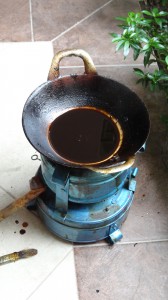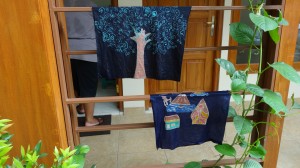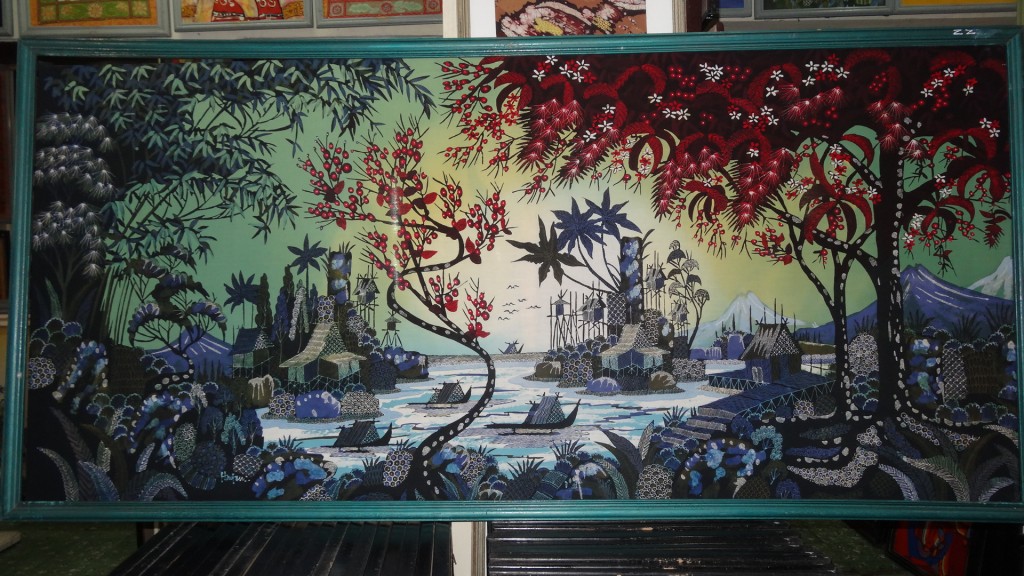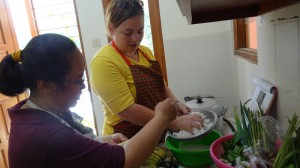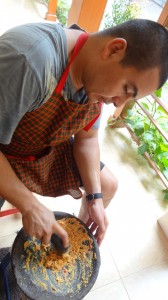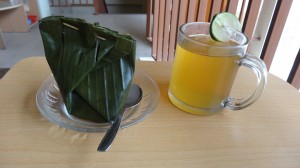Jogjakarta is known as the cultural heart of the Java Island in Indonesia. So Yasser and I were excited to delve in and discover the local arts and not only eat the yummy food but learn how to cook it as well….so we can keep eating it when we return home.
BATIK
As part of our language study, Yasser and I were able to learn the art of Batik. Batik is cloth made through a process of applying wax and then dying (where the part of the cloth with no wax takes on the color and the waxed portion is protected from the dye) multiple times to produce patterns or an image. Batik shirts and dresses are popular and are worn in day-to-day life by many Indonesians. Historically, the style of batik signified social status and lineage. When we visited the Sultan’s palace, we were able to see the various patterns reserved for royalty and different cloths for various activities such as weddings.
We were excited to try our hand at this art (well I may have been more excited than Yasser, but he went along with it anyways). Below are our masterpieces…along with an actual masterpiece we saw at a Batik school downtown.
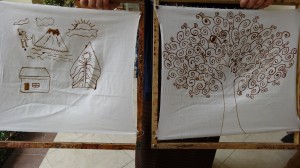
First we drew our design with pencil and then traced over it with wax. Yasser’s is on the left and mine on the right.
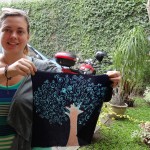
After dying the original drawings we then boiled the cloth to remove the wax, reapplied wax where we didn’t want dye to enter and dyed again (and repeated until we had our finished product)
COOKING
We also have been able to take part in a cooking course. Yasser was much more excited about this activity since the end result was a delicious dinner. We learned to make Pepes Ikan (steamed fish in banana leaf), Wedang Jahe (ginger, lime and palm sugar tea), and Kue Carang Gesing (banana and sweet coconut milk steamed in banana leaf). This was a lot of fun and all the food was amazing, we are looking forward to recreating these items when we return home for our friends and family!
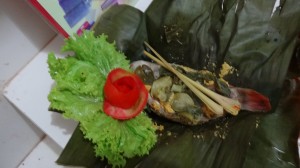
Steamed fish with spice rub (spices include; lemon grass, ginger, red onion, lime leaves, garlic, and many others I’m still trying to figure out in English) We also learned to make the tomato rose as a garnish. Yasser made an amazingly intricate rose, while I pretty much mutilated my tomato…so we have now designated Yasser as the tomato rose maker of our marriage!
There are many other amazing foods here that we’re hoping to learn how to cook before leaving. And some interesting uses of classic ingredients, for instance, one of the most popular drinks here is an avocado and chocolate shake. They don’t eat avocados in the form of guacamole, on a salad, or just plain with a little salt, they much prefer it sweet drizzled in chocolate.
We had also noticed that there were hardly any street dogs here, which was extremely common in Nicaragua. During a conversation with an instructor we found out that dog meat was a ‘somewhat’ typical ingredient used by many people. I don’t think I’ve eaten dog yet, but you really never know what you’re getting served sometime. Somehow this ‘dog eating’ conversation was in the same class session where I asked if there was an Indonesian saying that was similar to the English phrase ‘piece of cake’. In Spanish the saying is ‘pan comido’ (eaten bread) so we figured there would be something similar in Indonesian. Turns out there’s not but Yasser and my professor have coined the term ‘makan anging’ (eat dog) and now this is what we say when something is very easy….although I’m not sure eating dog is quite as easy as eating cake (or bread), at least for me, but it’ll do I guess!

